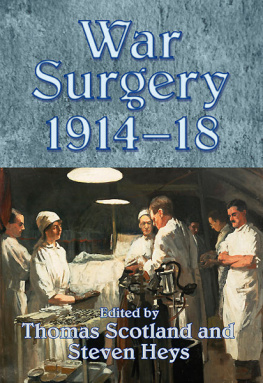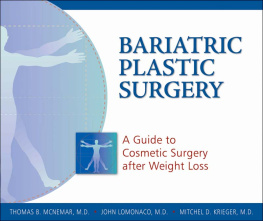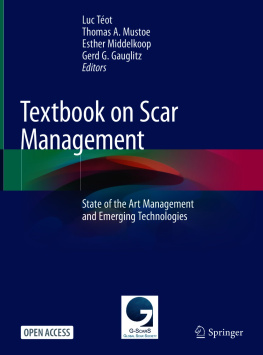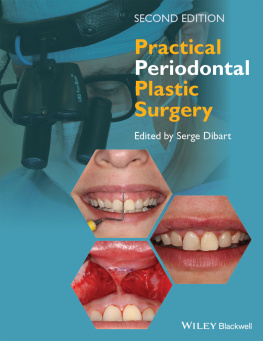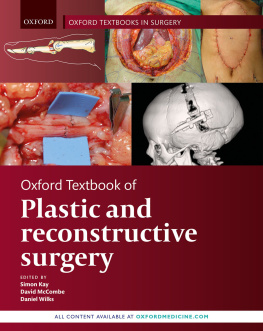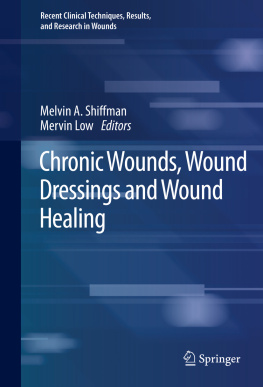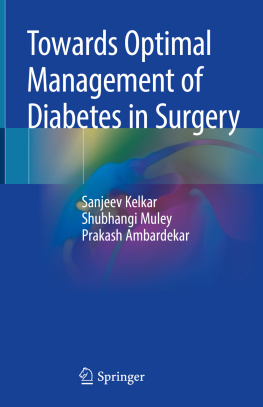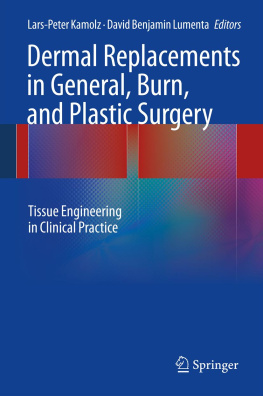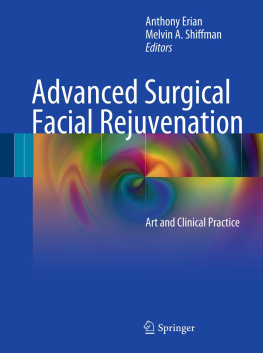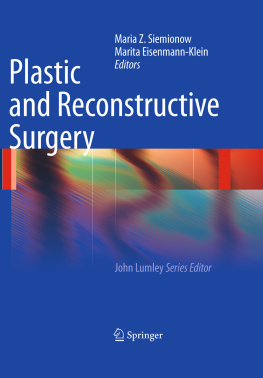
Helion & Company Limited
26 Willow Road
Solihull
West Midlands
B91 1UE
England
Tel. 0121 705 3393
Fax 0121 711 4075
Email:
Website: www.helion.co.uk
Published by Helion & Company 2012
Designed and typeset by Farr out Publications, Wokingham, Berkshire
Cover designed by Farr out Publications, Wokingham, Berkshire
Printed by Gutenberg Press Limited, Tarxien, Malta
Text Thomas Scotland and Steven Heys
Images as shown
Front cover: The Operating Theatre, 41st Casualty Clearing Station, 1918,
painting by Lobley J. Hodgson dated 1918. (Imperial War Museum ART 3750).
Rear cover: A sketch by Henry Tonks of Harold Delph Gillies operating. (The Hunterian
Museum at the Royal College of Surgeons).
ISBN 978 1 907677 70 0
EPUB ISBN: 9781909384378
British Library Cataloguing-in-Publication Data.
A catalogue record for this book is available from the British Library.
All rights reserved. No part of this publication may be reproduced, stored in a
retrieval system,or transmitted, in any form, or by any means, electronic, mechanical,
photocopying, recording or otherwise, without the express written consent of Helion &
Company Limited.
For details of other military history titles published by Helion & Company Limited
contact the above address, or visit our website: http://www.helion.co.uk.
We always welcome receiving book proposals from prospective authors.
Dedicated to
Corporal C. Reilly 9498 1st Battalion, Royal Scots Fusiliers Killed in Action near Ypres 1st March 1915 Age 23
Private George McNamee, 277574, 2nd Manchester Regiment, who survived the Western Front.
Contents
List of Figures
Journal Publishing Group)
List of Tables
List of Contributors
Contributors are listed in the order in which their work appears within this book.
Thomas R Scotland
Born in St. Andrews and brought up in the East Neuk of Fife, Tom was educated at Waid Academy in Anstruther. He graduated in Medicine from the University of Edinburgh in 1971, becoming a Fellow of the Royal College of Surgeons of Edinburgh in 1975. He developed his interest in the Great War whilst a student, when there were still many veterans alive. He trained in orthopaedic surgery in Aberdeen, and after spending a year as a Fellow in the University of Toronto, returned to take up the position of Consultant Orthopaedic Surgeon with Grampian Health Board and Honorary Senior Lecturer at the University of Aberdeen. His particular interests were knee surgery, paediatric orthopaedics and tumour surgery, and for three years he was lead clinician for the Scottish Sarcoma Managed Clinical Network. Over the years he has been a frequent visitor to the Western Front, and has found cycling the best way to visit different places. He has explored many areas of the Western Front with family and friends, and since retiring from the National Health Service in 2007 has kept in touch with former colleagues by leading cycling expeditions to the Western Front. He has pursued his interest in the Great War by making a particular study of Aberdeen surgeon, Sir Henry Gray, who played a pivotal role in the development of surgery on the Western Front, and has given various lectures on the development of surgical services during the Great War. In retirement he has completely re-invented himself as a cycling orthopaedic historian.
Steven D Heys
Born in Accrington in Lancashire and educated in England, Australia and Scotland, Steve graduated in Medicine from the University of Aberdeen in 1981 and undertook surgical training in the North-East of Scotland. He is a Fellow of the Royal Colleges of Surgeons in England, Edinburgh and Glasgow and underwent research training at the Rowett Research Institute in Aberdeen, obtaining a PhD in 1992. He specialised in general and breast cancer surgery for many years before latterly concentrating on breast cancer surgery together with his research interests in the role of nutrition in the causation of cancer, and has responsibilities for medical education both locally and nationally. He has published more than 200 scientific papers and written many book chapters on different aspects of surgery and played many national and international roles in surgery and the provision of surgical services. His interest in the Great War was sparked by the stories of the Accrington pals and the Lancashire Fusiliers, by his time as a member of the RAMC(V), serving for six years in the 51st Highland Brigade, and by Toms famous cycling tours around the Western Front where he has the dual role of bicycle mechanic and, because he is a keen bagpipe player, has been appointed as Piper to the tours!
E Ann Robertson
Ann Robertson graduated MBChB from the University of Birmingham in 1975. After registration she specialized in anaesthetics and became a registrar at Kings College Hospital in London after returning from a year in Nepal. She became a Fellow of the Royal College of Anaesthetists in 1979 and progressed to senior registrar jobs at Kings, rotating to Brighton.
After marrying Graeme, whom she met whilst doing some enforced research at Kings, she eventually moved to Scotland where she held consultant jobs first at Hairmyres Hospital and then at Aberdeen Royal Infirmary. An interest in Tropical Medicine led her to take the Diploma in Tropical Medicine of the Royal College of Physicians in 2010.
She worked for many years with Tom Scotland, one of this books editors, and was persuaded to cycle the Western Front on the first trip to include women. This led to an interest in anaesthetic developments during the Great War, and the writing of Chapter 3. She has a particular interest in the developments taking place in the understanding of physiology at the time and the characters that played a part in the Shock Committee convened in 1917. She is married with two grown-up sons.
Robin Reid
Robin Reid was born in Consett, County Durham. He graduated BSc in Molecular Biology and MBChB, both at the University of Glasgow. He trained in pathology at the Western Infirmary, Glasgow, becoming MRCPath in 1984, and gained further experience at the Nuffield Orthopaedic Centre, Oxford. He spent the rest of his career in the Western Infirmary as Senior Lecturer in Pathology then Consultant Pathologist with particular interests in the diagnosis of tumours of bone and soft tissue; he chaired the Scottish Bone Tumour Registry for over 20 years.
He has published over 70 papers, mainly on orthopaedic pathology, and four textbooks. He was President of the Association of Clinical Pathologists from 2010-2011. Retired from clinical practice, he is a member of NHS Greater Glasgow and Clyde Health Board. His historical interests range from ancient, through mediaeval to World War I.
Alexander MacDonald
Sandy MacDonald was born in 1929, and went to school at Perth Academy (1941-1947). He went to Edinburgh University (1941-1947), graduating MBChB. He pursued a career in radiology, and says he is old enough to remember some of the early pioneers in the specialty. He took the DMRD in 1959, and MRCPE in 1961. He became a Fellow of the Faculty of Radiologists in 1962, and became FRCR in 1970 (ish) and FRCP.
After graduating, he did his early jobs in London and Edinburgh, and was appointed Consultant Radiologist in Aberdeen in 1964, where he pioneered neuro-radiology in Aberdeen. Sandy retired in 1992, and re-invented himself, gaining a Scot Vec award in 1995, in Musical Instrument Technology. During this time, he buried himself in the part by growing a ponytail.
His wife Joan was a radiographer, who wisely decided she could not work with her husband, so changed career and became a music teacher instead. They have a grown up family. Sandy was a very keen amateur footballer in his day, which meant he was never to be messed with.
Next page
